Sign up for our newsletter
Sign up today to stay in the loop about the hottest deals, coolest new products, and exclusive sales.

Wahnapitae, ON P0M 3C0
Phone: 705-694-0065
Fax: 705-694-1594
Toll Free: 1-877-224-2323
Email: info@ibeadcanada.com
Mon-Sat: 10am - 6pm
Sun: 11am-5pm
Mon-Sat: 10am - 6pm
Sun: 11pm-5pm
Free Shipping on Most Orders Over $150* – Learn More >
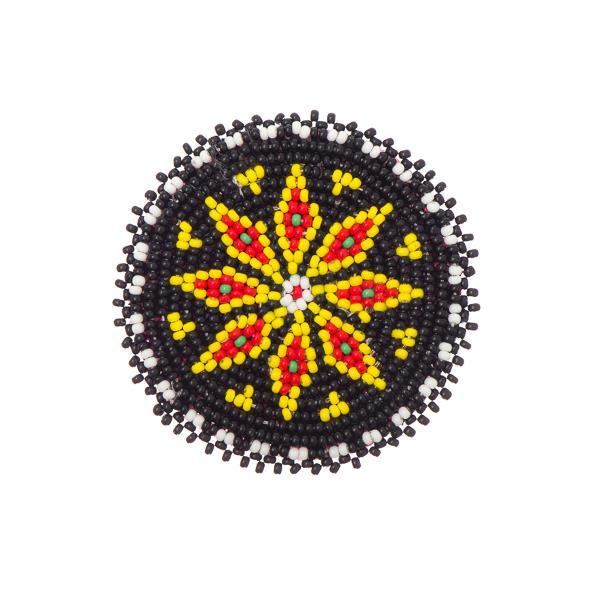 Beaded Rosettes
Beaded Rosettes
 Bells
Bells
 Cabochons
Cabochons
 Dolls & Acc.
Dolls & Acc.
 Dream Catcher Rings
Dream Catcher Rings
 Drum Making
Drum Making
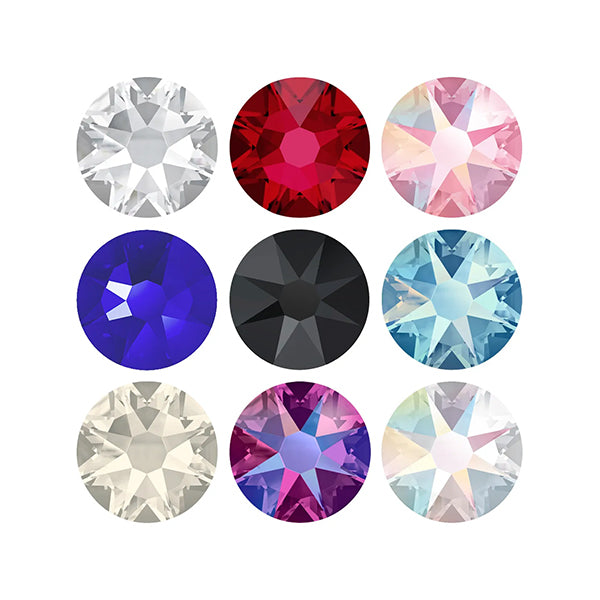 Flat Back Stones
Flat Back Stones
 Jingle Cones
Jingle Cones
 Mirrors
Mirrors
 Pipe Stems
Pipe Stems
 Rhinestone Banding
Rhinestone Banding
 Sequins
Sequins
 Sew On Stones
Sew On Stones
 Beading Foundation
Beading Foundation
 Crepe Soles
Crepe Soles
 Elastic Cord
Elastic Cord
 Fabric
Fabric
 Fringe
Fringe
 Ribbon
Ribbon
 Trim
Trim
 Bails
Bails
 Bolo Tie Acc.
Bolo Tie Acc.
 Bookmarks
Bookmarks
 Brooch & Bar Pins
Brooch & Bar Pins
 Buckles
Buckles
 Buttons
Buttons
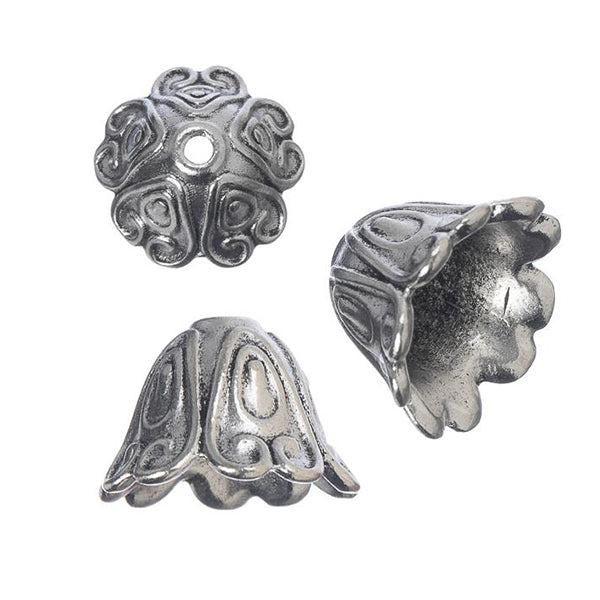 Caps & Cones
Caps & Cones
 Chain Extenders
Chain Extenders
 Clasps
Clasps
 Crimps & Ends
Crimps & Ends
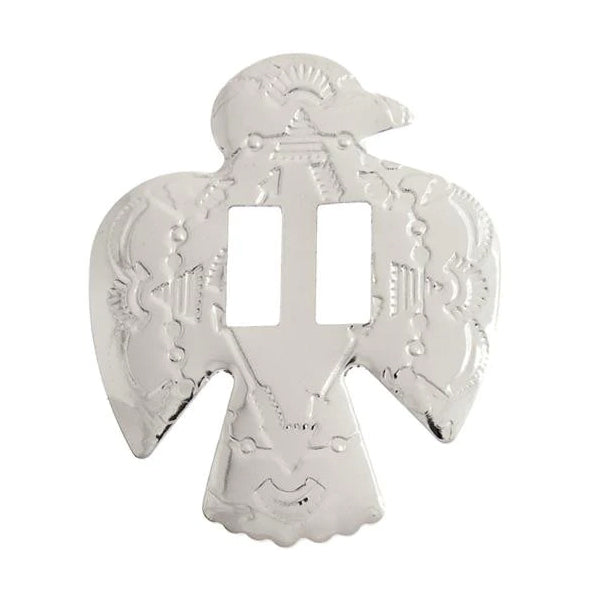 Conchos
Conchos
 Connectors
Connectors
 Earring Components
Earring Components
 Eyelets & Snaps
Eyelets & Snaps
 Findings Sets
Findings Sets
 Garment Studs
Garment Studs
 Hair Accessories
Hair Accessories
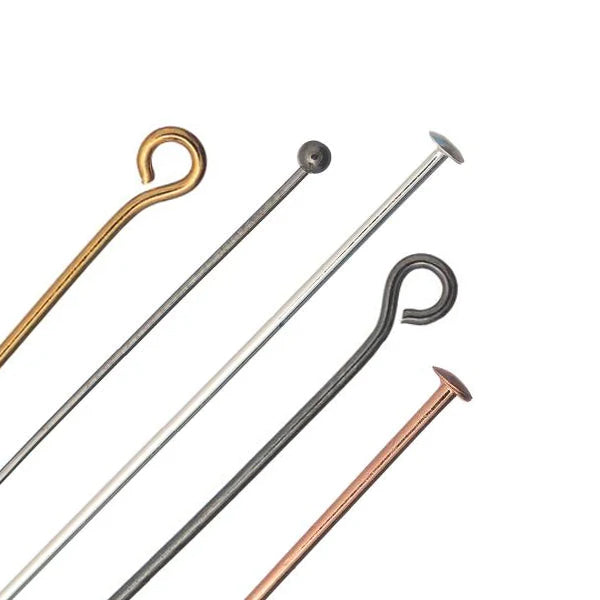 Head & Eye Pins
Head & Eye Pins
 Jewelry Parts
Jewelry Parts
 Jump & Split Rings
Jump & Split Rings
 Key Chain Parts
Key Chain Parts
 Mobile Phone Acc.
Mobile Phone Acc.
 Safety Pins
Safety Pins
 Wire Guards
Wire Guards
 Feathers
Feathers
 Furs & Animal Parts
Furs & Animal Parts
 Leather & Rawhide
Leather & Rawhide
 Cord
Cord
 Chain
Chain
 Leather & Suede Lace
Leather & Suede Lace
 Sinew
Sinew
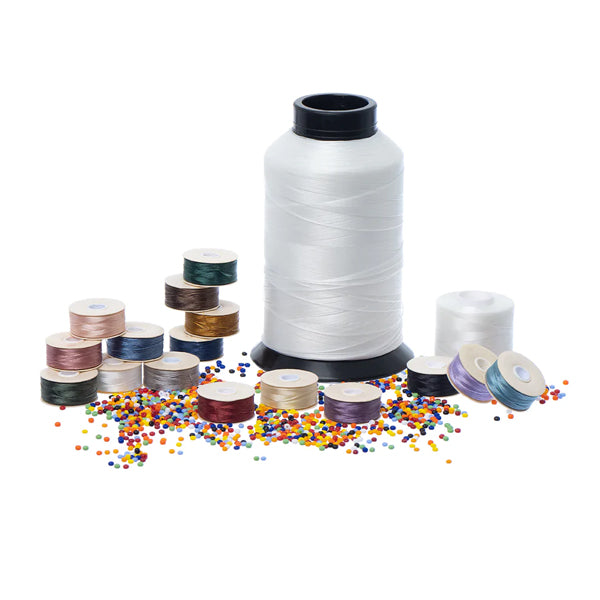 Thread
Thread
 Jewelry Wire
Jewelry Wire
 Memory Wire
Memory Wire
 Shaping Wire
Shaping Wire
 Bead & Craft Kits
Bead & Craft Kits
 Books
Books
 Patterns
Patterns
 Displays
Displays
 Gift Bags
Gift Bags
 Gift Boxes
Gift Boxes
 Jewelry Cards
Jewelry Cards
 Organizers
Organizers
 Tags, Labels & Stickers
Tags, Labels & Stickers
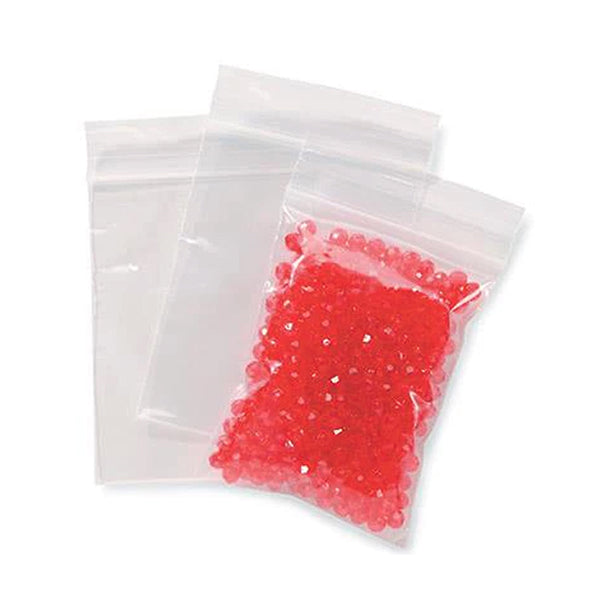 Zip Lock Bags
Zip Lock Bags
 Chakra
Chakra
 Healing Stones
Healing Stones
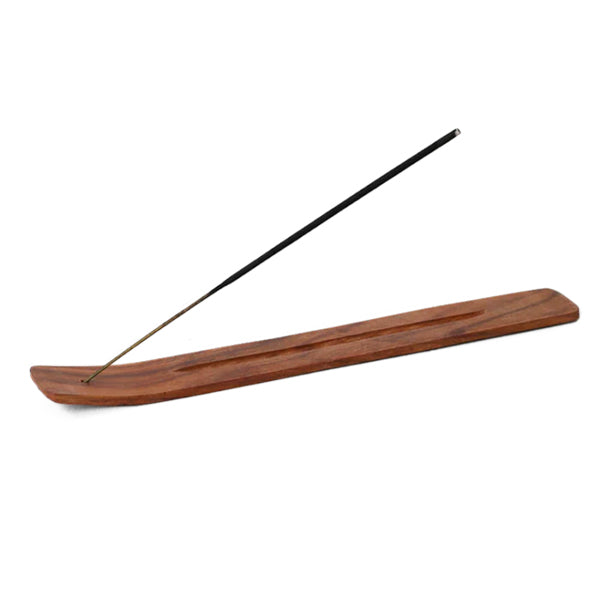 Incense & Holders
Incense & Holders
 Mala Beads & Acc.
Mala Beads & Acc.
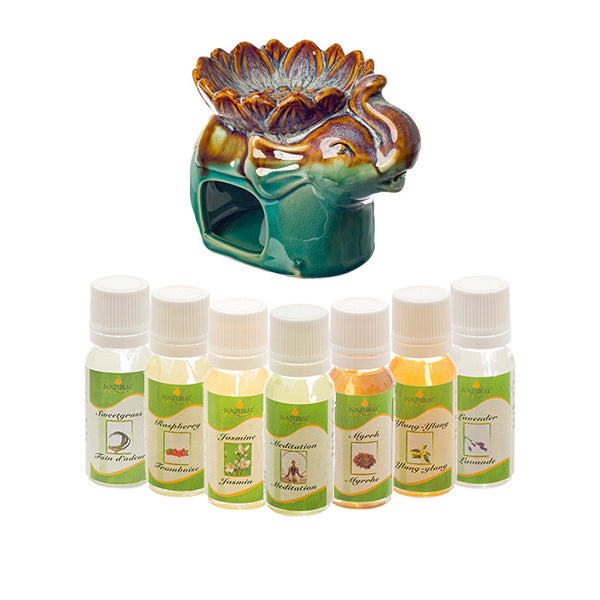 Oils & Burners
Oils & Burners
 Rocks & Minerals
Rocks & Minerals
 Smudging
Smudging
The rare perfect sphere of natural pearls, lustrous as silk and round as a full moon, has for many centuries been a prized possession and signifier of wealth. The soft creamy colouring flattered the skin tones of many a wearer, and their creation within the sealed environment of an oyster shell was nothing short of magical (the ancient Greeks believed the pearls formed as a result of lightning striking the sea). From Cleopatra, Elizabeth I to Elizabeth Taylor, leading ladies, and plenty of gentlemen too, appreciated the value and the beauty of these natural gems. Emperor Julius Caesar, was allegedly such a devotee of the pearl that he was rumoured to have been partially driven to invade England based on his desire for British pearls. He also passed a decree stating that only aristocrats would be permitted to wear pearls within the boundaries of Rome. For those who could afford them, pearls were worn as conspicuous displays of wealth, good taste and sophistication. Natural pearls don’t dazzle the eye in the way that cut gemstones can do, instead they rely on perfection of shape or unusual size to speak of their rarity and cost.
As with many rare and expensive natural products, from the earliest times a cheaper and more readily available alternative to the pearl was sought so that those who couldn’t afford the real thing could purchase a convincing lookalike. In Ancient Rome glass beads were coated with silver and then coated again with glass in an attempt to replicate the lustre of pearls. Small balls of clay coated with mica powder and then baked, were another early attempt to create the appearance of natural pearls. During the 13th century the Chinese learnt that they could cultivate pearls in the shell, but it was man-made ‘pearls’ that could be mass-produced that had the greatest impact on the fashionable taste for the wearing of pearls as their low cost made them available to a wide market. Initially the scale of production was limited to the workshops of Murano, but by the 19th century, Paris and Rome were the two centres of a bead making industry furiously catering for the pearl-laden fashions of the day. A young middle-class lady could afford to dress her lace with Roman pearls, and the wealthy wife of a landowner would wear Parisian pearls as part of her daytime toilette, reserving her finest natural pearls for soirees.
Two forms of faux pearls were manufactured in Italy, the earliest, produced from at least the 13th century, and hailing from the ingenious glass workshops of Venice, were imitation glass pearls. Some of these pearls were apparently made from an intriguing mixture of powdered glass, snail slime and egg white. This mix was pressed into shape and a hole inserted into the bead before the mixture hardened. In 1440, a publication revealed the secret of making pearls from shells and fish scales. The Venetian pearl merchants felt so threatened by the trade in false pearls, that they made it illegal to produce them and violation was punished by the loss of the maker’s right hand and a ten year enforced exile. The Venetian glass makers guild was just as tough in their decisions to protect their own interests!
The second form of imitation pearls to originate in Italy, were known as Roman Pearls (later this term was sometimes also applied to blown glass imitation pearl beads). These were formed from alabaster coated with an essence extracted from fish scales.
A business card for Antonio Lacchini from the 1900s inviting viewings of the pearl making process (Source eBay)
This extract from the London Literary Gazette and Journal of Belles Lettres, Arts, Sciences, Etc., quotes from a fictional work entitled Tales of the Moor (published in 1828), by the writer, Amelia Gillespie Smyth. One of the tales characters recounts a visit to the city of Rome:
“I had intended to devote the evening, much of which remained before me, to a stroll beyond the walls, in the lone Campagna, which was alone wanting to complete my mental panorama; but on returning to my hotel, I found that business, trifling enough in itself, but important to my character as a true and loyal knight, would require my presence in an opposite and more ignoble quarter. I had been enjoined by my sister, and by one whose behests were perhaps still more imperative, to preserve and bring home a large quantity of the highly esteemed Roman pearls; and finding that the precious packet had not, as promised, made its appearance … I resolved to be my own messenger, and to console myself for other privations by a glance at this manufacture, peculiar to Rome; the fish, somewhat resembling the sardine, whose produce gives its activity, being limited to the neighbouring coast.
I was not sorry to be led once more into a quarter of the city which I had rarely trod; through streets spacious, and chiefly formed of the deserted palaces before alluded to, adjoining to, nay even within some of the most decayed of which, a population of the wretchedest description support existence, Heaven alone knows how! In one of these large waste buildings was the manufactory I sought; and the number of persons whom I found employed in its dilapidated apartments, threw some light on the mystery I had just been endeavouring to fathom. They were, of course, chiefly females, but differing as widely in person and manners as the nature of their occupations was powerfully contrasted. In a sort of outer vestibule, some coarse Trasteverine Amazons, the very originals from whom Pinelli must have taken his frightfully accurate sketches of a she fight in that privileged Rione, were characteristically and congenially employed in the extracting from piles of the half-decaying fish the material which communicates to the artificial pearl its truly natural lustre. Here, again, sat a group of ordinary-looking women, mingled with some meagre and emaciated men, busied in forming the rude bead of alabaster, which, cut while that substance is yet soft, is, when properly rounded, coated over with the lustrous fluid before mentioned. This pearl, through far superior in nature and durability to the compound of wax and glass which the more volatile Parisian employs to the deceive the eye, has yet, especially when worn in any quantity, the disadvantage of such an overpowering weight … They are finally polished and freed from adhering impurities by the hands of female artisans.”
The Engineer and Mechanic’s Encyclopaedia (Vol 2) by Luke Hebert, published in London 1849, has this to add:
“Roman pearls are formed of a very pure alabaster, considerable quarries of which exist near Pisa, in Tuscany. The process is as follows: – the alabaster is first sawn into slices, the thickness of the pearls required; the pearls are then formed with an instrument which bores a small hole in the centre, at the same time that the required shape is obtained. The next thing in the process is their immersion in boiling wax, to give them a rich yellow hue, and afterwards to cover them several times with the silvery substance obtained from the scales of the bleak. The singular beauty of this ornament, which perfectly resembles the real pearl, the varied patterns in which they are arranged, and their extreme cheapness, render them an object much sought after; while their solidity is such, that they may be dashed to the ground with violence without receiving the slightest injury; being thus rendered far superior to those of French manufacture, which are at once more fragile, and considerably less imitative.”
The French beads referred to rather snootily in both of the above quotes, are those manufactured according to the method attributed to a rosary maker in Paris, by the name of M. Jacquin. In the second half of the 17th century Jacquin patented a method of making fake pearls from hollow blown glass spheres that were coated on the inside with ground fish scales, applied in a liquid form that was granted the poetic name, essence d’orient. The hollow balls were then filled with wax to give them a weight similar to a natural pearl. Legend has it that Jacquin noticed that water containing scales from the ablette, or the bleak, produced reflections that resembled those produced by the nacre on a natural pearl.
The ablette, or bleak, is a small fish of 5 – 10cm in length.
He managed to extract the protein that created this effect (guanine) and used it as an imitation nacre essence. Diderot’s Encyclopédie, published in France in 27 volumes between 1751 and 1772, has two plates of illustrations demonstrating the production of ‘Perles Fausses’ using this essence to create beads.
Plate II above, shows the production of the glass spheres, blown from a length of tubular glass (the glass used is girasole a glass-type produced in Murano and in appearance was supposed to imitate opal, with a milky-white colouring). The ladies on the left of the illustration are, Fig. 2, using a table-top lamp and blowing to create the spheres from the glass tube. The second lady, Fig. 3, is using a table-top lamp to melt and smooth out the openings of the glass spheres were they have been cut from the tube. The other figures in the room are producing the glass tubes that the ladies are working with. The tables shown beneath the interior scene have four table-top mounted lamps or burners, with a foot pedal or bellows beneath to presumably assist the draw of the flame.
Plate III above, illustrates the next stages in the manufacture of ‘fake pearls’. The lady seated at the table in the centre of the image is descaling fish so that the scales can be dissolved to produce a pearlescent liquor. The liquor presumably must sit in the pan to the right of this lady, although according to a 19th century source quoted in Glass in Jewelry by Sibylle Jargstorf, ‘about 20,000 fishes were need to produce just 3.5 kilograms of scales. This quantity was reduced into 0.5 liter of concentrated liquid, which then had to be diluted for lining the beads’, so this solitary worker is simply representative of the labour involved!
Fig.2 and Fig. 3 have the job of blowing the fish scale liquor inside the glass spheres produced by their fellow workers in Plate II. The beads are placed in a basket and agitated by the cradle that sits on the table between them (the same table is shown again beneath the interior scene, and it is clear to see that the cradle can be rocked by the use of a foot pedal. This agitation ensures that the entire interior of the glass bead is covered with the pearlescent liquid. Hanging at the windows behind Fig. 3 are sieves filled with beads that are drying out in the air that flows into the room.
Next, the beads are passed to ladies Fig. 5 and Fig. 6 who have the job of filling the interiors of the beads with soft wax and finishing the beads. Fig. 5 is dipping the bead into wax held in the bowl in front of her, but it could also be blown in using a tube and the mouth. Fig. 6 then inserts a piece of rolled card that pierces a hole in the wax and forms the central core of the bead. The detailed instructions for creating these card cores are given beneath the main illustration. Fig.6 then uses a knife to trim the card as it protrudes from the bead as can be seen below.
In the above photograph it is possible to see the shape of the neck of the tube as it is still present either side of the beads. (Source: The Bead Database)
A guide entitled A History of British Fishes, by William Yarrell, published in 1836, gives some more detail about the extraction of the pearlescent lustre from the scales of the fish.
“On the inner surface of the scales of Roach, Dace, Bleak, Whitebait, and other fishes, is found a silvery pigment, which gives the lustre these scales possess. Advantage has been taken of the colouring matter thus afforded to imitate artificially the Oriental pearl. When this practice was most in fashion, the manufactured ornaments bore the name of patent pearl, and the use was universal in the bead-trade for necklaces, eardrops, &c. At present, it seems confined to ornaments attached to combs, or small beads arranged with flowers for head-dresses. So great was the demand formerly at particular times, that the price of a quart measure of fishscales has varied from one guinea to five. The Thames fishermen gave themselves no trouble beyond taking off the side scales, throwing the fish into the river again ; and it was the custom for hawkers regularly before selling any white-fish, as they were called, to supply the beadmakers with the scales. The method of obtaining and using the colouring matter was, first carrying off the slime and dirt from the scales by a run of water ; then soaking them for a time, the pigment was found at the bottom of the vessel. When thus produced, small glass tubes were dipped in, and the pigment injected into thin blown hollow glass beads of various forms and sizes. These were then spread on sieves, and dried in a current of air. If greater weight and firmness were required, a further injection of wax was necessary. Of this pigment, that obtained from the scales of Roach and Dace was the least valuable ; that from the Bleak was in much greater request ; but the Whitebait afforded the most delicate and beautiful silver, and obtained the highest price, partly from the prohibitory regulations affecting the capture of this little fish, the difficulty of transmission, and rapid decomposition. This art of forming artificial pearls is said to have been first practised by the French. Dr. Lister, in his Journey to Paris, says, that when he was in that city, a manufacturer used in one winter thirty hampers of Bleak. Our term Bleak, or Blick, according to Merrett, which has reference to the whiteness of the fish, is derived from a Northern word, which signifies to bleach or whiten.”
The mass-production of false pearls using the science and manufacture detailed above, happened within the 19th century, and other countries and glass-making centres also produced their variations on Roman or Parisian pearls. German and Bohemian glass bead makers used their own version of the opaque white girasole glass to produce hollow round beads which they would then either coat on the outside with a suitable finish, or blow silver into line the inside of the glass. The production of the interior lined glass pearls continued until the Second World War.
The baton for glass pearl production passed at the end of the 19th century to the Spanish island of Mallorca (or Majorca), when the German born, Eduard Heusch (1865 to 1937), founded the company, Societé des perles de Indes E. Heusch & Co. In 1890 he had obtained the first patent validated for pearl production, and he had a vision of creating a man-made glass pearl that was impossible to differentiate from the a natural pearl. In 1902 he set up a factory on the island of Mallorca, famous for its tradition of glass-blowing. From 1906 French glass makers brought French-made machines to the island to mechanize aspects of the process, and a group of glass pearl factories was established under the name SA Fabrica. Other factories and producers moved to the island as the conflicts of World War I forced makers from Paris to Barcelona. In the early 1920s a system of manufacture was perfected that used an opal kernal – a perfectly circular core of opalescent glass crystal. By 1943, the company that Heusch had founded was known as Majorica, and was the world’s leading producer of pearls, manufacturing more than 2.5 million pearls. Trade continued during World War II, which meant that at that time Spain was virtually the only source of glass pearls in the world. During the war the company exported more than a million pearl necklaces to America. In 1952 came another breakthrough in the company’s quest to create a ‘true’ imitation pearl, when after testing many shell and marine products, a formula was produced that could be layered many times over the glass bead, replicating the accumulation of nacre on a natural pearl, and producing the visual and tactile appearance of a true pearl. The formula and details of the technique used to make the Majorica Pearls remain a trade secret.
This image from the Majorica factory, dating from 1975, shows a something of the production method where individually pin mounted beads are dipped into baths of the secret liquid pearlescent coating. (Source: Majorica)
Majorica continue to create high quality beads for the luxury costume jewellery market with over 450 designs. Other market sectors are today served by mainly Czech and Chinese manufacturers of faux pearl beads, usually dip coated glass beads or acrylic beads, often producing colours not found in nature but created with an eye for fashion, these beads retain the pearl lustre finish that many of us appreciate and wish to use in our jewellery designs to signify a sense of history and the beauty of nature, without the price tag. Another sector of this market are the natural or dye coloured freshwater pearls which are pearls that has been cultured or farmed, with pearl cultivation now taking place almost exclusively in China.
Sign up today to stay in the loop about the hottest deals, coolest new products, and exclusive sales.
Thanks for subscribing!
This email has been registered!
Last updated: September 11, 2025
Summary of i-Bead Inc.'s Terms of Service:
Product Descriptions: i-Bead Inc. strives for accurate product information, but errors may occur. Product availability and specifications, like size, are subject to change.
Product Images: Images are for representation purposes; actual products may vary in appearance due to display settings or manufacturing differences.
Copyright & Intellectual Property: All content on the Website is owned by i-Bead Inc. or its licensors. Users are granted a limited, non-commercial license to view and print content for personal use but cannot reproduce or distribute it without permission.
Trademarks: The i-Bead name and logo are trademarks of i-Bead Inc. Unauthorized use of trademarks is prohibited.
Use of the Website: Users must comply with laws and the Terms. Account creation may be required for certain services. Users are responsible for account security and cannot engage in harmful behavior or unauthorized access.
Pricing & Availability: Prices are listed in Canadian Dollars (CAD) and are subject to change. Additional charges for taxes, shipping, and duties may apply. Out-of-stock products may be removed or delayed.
Limitation of Liability: i-Bead Inc. is not liable for any indirect damages, and the website is provided "as is" without warranties.
Privacy & Data Protection: The use of personal data is governed by the company’s Privacy Policy, which users should review.
Indemnification: Users agree to defend and hold i-Bead Inc. harmless from any legal issues arising from their use of the site or violation of the Terms.
Modifications: i-Bead Inc. can update these Terms at any time. Changes will be effective upon posting.
Governing Law: The Terms are governed by the laws of Ontario, Canada, and any disputes will be resolved in Ontario courts.
Contact Information: For questions, users can contact i-Bead Inc. at their address or via email or phone.
Summary of i-Bead Inc.'s Refund Policy:
In-Store Purchases: Items can be returned within 30 days with the original receipt for an exchange, store credit, or refund. Must be unopened and in original condition.
Online Purchases: Returns allowed within 30 days of receiving your order. Prior authorization required. Items must be unopened and in original condition.
Non-Returnable Items: Sale items, opened packages, broken strands, cut items (e.g., leather, cord), books, and special orders cannot be returned.
Restocking Fee: Returns after 30 days incur a 20% restocking fee. Clearance/discontinued items cannot be returned after 30 days.
Damaged/Defective Items: Contact customer service within 48 hours. Return shipping will be covered, and you can request a refund or replacement.
Return Instructions: Include the reason for the return, order details, and use a traceable shipping carrier. Returns must be prepaid, and customs fees are not covered.
Refund Process: Refunds will be issued after inspection, minus shipping costs, and may take 1-2 weeks to process.
For returns, the items must be in their original, unopened condition.
Summary of i-Bead Inc.'s Shipping Policy:
Shipping Methods: i-Bead uses Purolator, UPS, Canpar, and FedEx for Ground and Express shipping.
Shipping Times: Orders placed by 12:00 PM EST ship the same day; orders placed after that time ship the next business day. V.I.Bead Members get same-day shipping regardless of order volume.
Shipping Locations: We ship within Canada and to select international destinations (excluding the United States). P.O. Boxes are not eligible.
Shipping Discounts:
Tracking & Insurance: All orders include tracking. Insurance is included for orders under $100; additional coverage is available for $3 per $100.
Damage or Loss: Contact customer service within 48 hours if your order is damaged or lost during transit. Claims will be processed with the courier.
Theft: i-Bead is not responsible for theft once a package is marked as delivered. Signature confirmation is available for added security.
Delays: Delivery may be delayed due to factors like weather, rural locations, or peak seasons.
Summary of i-Bead Inc.'s Sales Tax Policy:
Canadian Residents: Sales tax is applied based on the province:
First Nations: Eligible customers may receive tax relief with the Indian Status Tax Exemption Card.
U.S. & International Orders: U.S.: Not applicable—shipping is paused. International (non-U.S.): No Canadian sales tax or VAT is charged by i-Bead; destination duties/taxes may apply.
In short, Canadian customers are taxed based on their province; U.S. orders are not available; international customers may incur destination duties/taxes.
Summary of i-Bead Inc.'s Native Status Card Policy:
Tax Exemption Eligibility: Status Card holders can qualify for GST/HST relief if:
Ontario Residents: Eligible for an 8% HST rebate on orders shipped within Ontario.
How to Apply:
Important: Misrepresentation of eligibility can result in penalties from the CRA.
In short, eligible Status Card holders can receive tax relief by following the proper procedure and submitting required documentation.
Summary of i-Bead Inc.'s Privacy Policy:
i-Bead Inc.'s Privacy Policy outlines how they collect, use, and disclose personal information. They gather data directly from users (e.g., contact details, order info, payment info) and through tracking technologies (e.g., cookies). This data is used for order processing, marketing, security, and customer support. The company may share data with third-party vendors and partners for service fulfillment, marketing, and legal compliance. Users can access, correct, or delete their data, and opt-out of marketing communications. The policy also covers data security, retention, and international transfers.
By completing the checkout process, you (the customer) acknowledge that you have read, understood, and agreed to the Terms and Conditions outlined by i-Bead Inc. Furthermore, you agree that i-Bead Inc. shall not be held liable for any delays in shipping caused by factors beyond its control, including, but not limited to, disruptions due to COVID-19, adverse weather conditions, holiday seasons, natural disasters (Acts of God), strikes, or lock-outs or any other unforeseeable events. In addition, in the event that a parcel is damaged or lost during transit, and you have not obtained additional insurance coverage, you expressly agree that i-Bead Inc. shall not be held responsible or accountable for any resultant loss, damage, or delay.
Wahnapitae, ON P0M 3C0
Phone: 705-694-0065
Fax: 705-694-1594
Toll Free: 1-877-224-2323
Email: info@ibeadcanada.com
Mon-Sat: 10am - 6pm
Sun: 11am-5pm
Mon-Sat: 10am - 6pm
Sun: 11pm-5pm